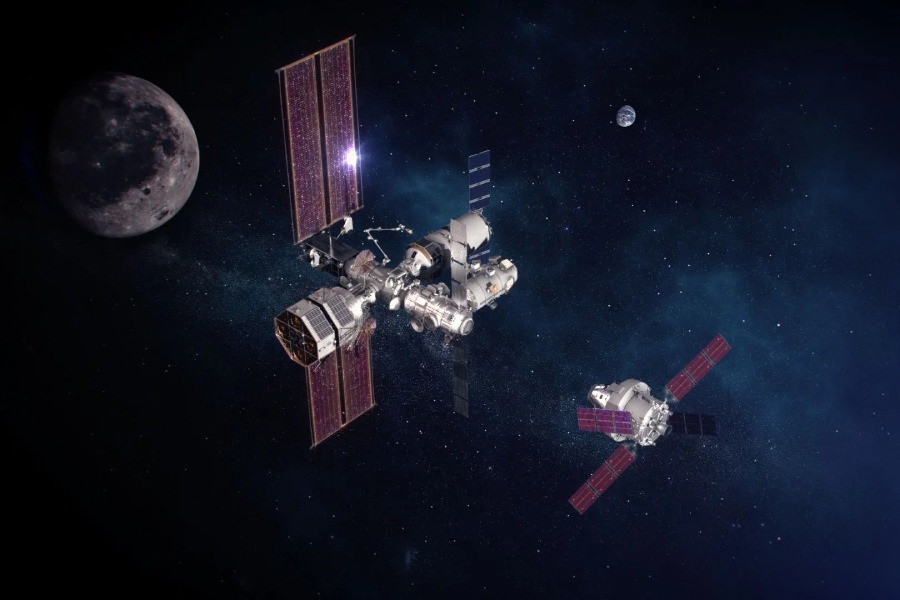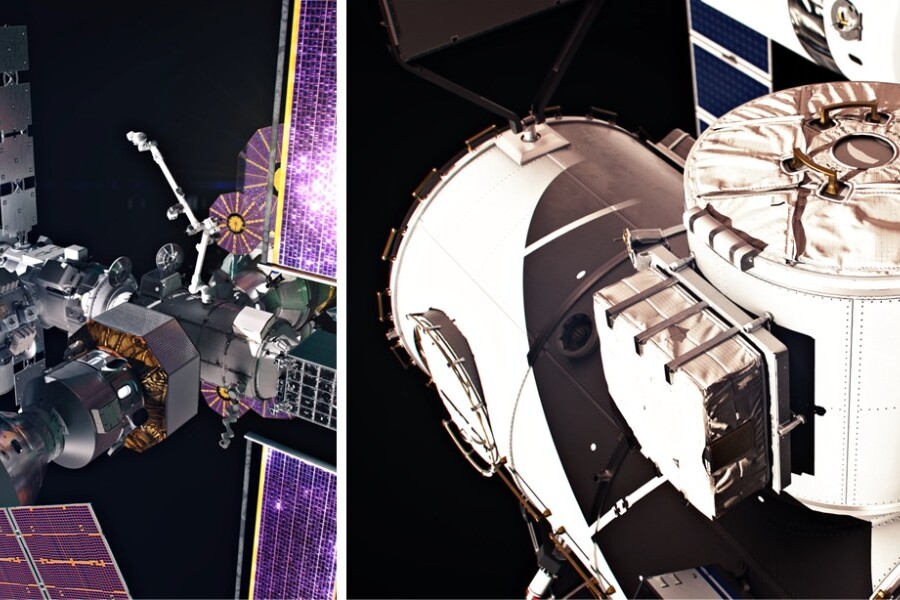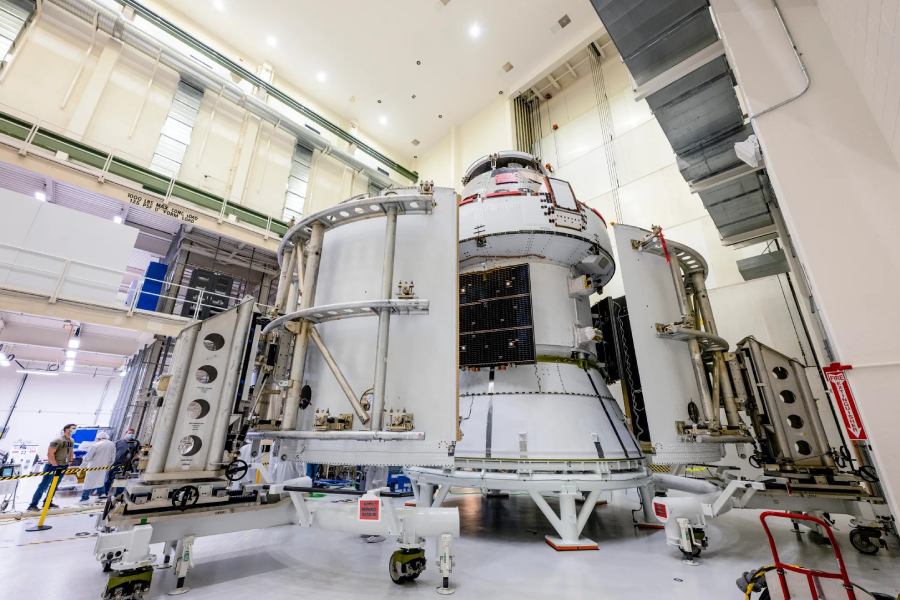Artemis’s mission is a captivating odyssey that transcends the boundaries of our earthly domain. This cosmic innovation, technology, and human aspiration beckons us to the celestial stage, where the Artemis mission unfolds as a symbol of our collective journey into the vast unknown. But what really is the Artemis mission?
In this article, we’ll dive deeper to explain the key parts and objectives of the Artemis Mission. We’ll explore the powerful new rockets being built to take astronauts off Earth.
We’ll also discuss the cutting-edge Orion spacecraft that will ferry crews to lunar orbit. And we’ll learn about the lunar Gateway, a proposed space station to orbit the Moon and support surface missions. Join us as we highlight how NASA intends to launch humanity back to the Moon and beyond in the coming years.
What Is Artemis Mission?
It is a NASA-led initiative focused on returning humans to the Moon and eventually establishing a sustainable human presence. The program aims to land the first woman and the next man on the lunar surface, conducting various scientific experiments and preparing for future crewed missions to Mars.
Artemis includes a series of missions, with Artemis I being an uncrewed test flight and subsequent missions involving astronauts. The program leverages the Space Launch System (SLS) and the Orion spacecraft for deep space exploration

Why is the Artemis program important?
The Artemis program is NASA’s plan to return astronauts to the lunar surface for the first time since the Apollo era. Named after the twin sister of Apollo in Greek mythology, the mission aims to land the first woman and next man on the Moon by 2025. Artemis seeks to establish sustainable lunar exploration and utilization by the end of the decade.
Supporting human lunar exploration
The main aim is to advance technologies for long-term lunar habitation. This involves testing crucial systems such as lunar habitats, rovers, power sources, and life support.
Scientifically, Artemis will facilitate new studies of the lunar environment, topography, and composition from both the surface and orbit. Additionally, the mission aims to utilize commercial and international partnerships to ensure sustainable lunar operations.
Preparing for future Mars missions
Artemis provides vital experience for eventual human expeditions to Mars. The lunar surface offers an ideal proving ground to validate technologies and procedures required for Mars missions.
Operations on the Moon will prepare astronauts for the rigors of deep space travel far from Earth. In achieving its lunar objectives, Artemis aims to lay the groundwork for the next giant leap in human space exploration.
But how many Artemis missions will there be? As per the schedule, the manned Artemis II launch is set for late 2025, followed by the crewed lunar landing of Artemis III in 2026. After Artemis IV docks with the Lunar Gateway in 2028, yearly Moon landings are scheduled to follow.
Lunar Gateway Station
Purpose and role
The Lunar Gateway plays a critical role in NASA’s infrastructure plans for the Artemis program. This small space station will orbit the Moon and serve as a waypoint, facilitating the travel of astronauts between Earth and the lunar surface.
From its vantage point in lunar orbit, the Gateway will provide vital support capabilities to enable long-term operations on and around the Moon. Unlike any previous NASA mission, the Lunar Gateway will allow extended crew stays in deep space.
It will act as a command center and communication relay for surface expeditions. The Gateway will also serve as a research outpost where scientists can study the effects of deep space on astronauts, test new technologies, and observe the lunar surface.
Orbital platform design
The Lunar Gateway will consist of a small habitat module for astronaut accommodations. Additional components include a docking port, airlock, solar arrays, communication systems, and propulsion.
It will be assembled in orbit using a modular design that allows future expansion, and the Gateway is planned to operate autonomously when uncrewed.
Enabling sustained lunar presence
As an orbital outpost, the Lunar Gateway offers vital benefits for sustained lunar exploration under Artemis. It provides a temporary place for astronauts to live during surface missions.
The Gateway also enables reuse and servicing of lunar landers and acts as a communications relay. Supporting reusable lunar transportation facilitates extended lunar surface habitation and science.
The Lunar Gateway is the cornerstone for NASA’s plans to establish a permanent human foothold on and around the Moon. The outpost expands opportunities for discovery and utilization of lunar resources under the Artemis program.
Life Support Systems
Critical for habitability
The Lunar Gateway will contain advanced life support systems to sustain astronauts on extended lunar missions. These complex systems provide breathable air, water, food, comfortable temperatures, and a hygienic environment. Reliable, efficient life support is essential given the dangers of the space environment.
Air revitalization
The air revitalization system plays a crucial role in maintaining a healthy atmosphere. It filters out dust and contaminants while regulating oxygen and nitrogen levels. Meanwhile, carbon dioxide removal equipment efficiently cleans exhaled air through adsorbents and converters.
To further enhance air quality, ventilation is employed to circulate and distribute fresh air within the habitat module. These combined functions guarantee that astronauts always have an ample supply of clean and breathable air.
Water management
Water management hardware recovers water from wastewater and urine through processes like filtration, distillation, and treatment, making it safe for consumption. Also, water stores provide drinking water, support food preparation, and facilitate hygiene activities. Moreover, condensate systems efficiently extract humidity from cabin air.
Thermal control
On board the Gateway, heaters, coolant loops, and radiators work together to maintain comfortable temperatures. Insulation prevents heat transfer to and from the external space environment. Fans distribute heating and cooling to different areas, ensuring suitable conditions.
These integrated life support systems are crucial for astronauts to live and work safely on extended missions to the Moon and beyond. Establishing a sustained human presence on the lunar surface relies on reliable closed-loop life support.

Construction and Assembly
Phasing of buildup
The Lunar Gateway will be constructed in phases using modular components launched separately. The first two elements are the Power and Propulsion Element and the Habitation and Logistics Outpost.
These first two elements are planned to launch together no earlier than November 2024. Subsequent elements will be added on crewed Artemis missions to expand Gateway capabilities.
On-orbit assembly
Gateway components will be launched aboard commercial rockets to low Earth orbit. The elements will undergo final outfitting before using their propulsion to transit to lunar orbit.
Astronauts on Orion spacecraft will rendezvous and dock with Gateway modules to inspect and integrate them. Robotic arms will assist with assembly, positioning, and structural connections.
Key technologies
Building the Gateway hinges on cutting-edge innovations. With the use of composites and lightweight alloys, large pressurized volumes become liftable by commercial rockets. Additionally, roll-out solar arrays enhance power generation.
Meanwhile, electric propulsion ensures efficient stationkeeping and altitude changes in lunar orbit. And docking ports enable flexible reconfiguration as new elements join the Gateway.
Partnerships
NASA is collaborating extensively to build the Lunar Gateway. Partners include the European Space Agency, JAXA, and Canadian Space Agency.
Commercial teams like Maxar, Sierra Nevada, and Northrop Grumman are designing and fabricating Gateway elements. International cooperation will continue expanding contributions to the lunar outpost.
The incremental growth and maturation of the Lunar Gateway provide NASA and its partners with a platform. They can use it to gain experience with sustaining humans in deep space.
The lessons learned from the Lunar Gateway will inform future spacecraft. These future deep space vehicles will support missions to Mars.
Crew Module and Mission Specialists for Artemis Missions
Orion crew module design and capabilities
The Orion crew module will transport astronauts to cislunar space to fulfill Artemis mission objectives. This advanced capsule provides a safe, habitable environment needed for deep space operations.
Orion can support a crew of four for missions of up to 21 days with its sophisticated life support systems, avionics, software, and crew interfaces. This enables extended stays near the Moon during Artemis flights.
Training and expertise of Artemis astronauts
Achieving success on complex Artemis missions also requires selecting specialized astronauts and providing extensive training. Mission crew members are chosen based on relevant expertise and undergo years of demanding preparation.
Training develops crucial skills for living and working in deep space and lunar environments. The astronauts also train extensively together as a cohesive team. This rigorous selection and training process produces qualified crew members.
Risk Management Strategies for the Artemis Mission
Orion crew capsule safety features
The Orion crew capsule prioritizes safety, featuring radiation shielding, redundant systems, and reliable launch escape capabilities. Mission planning and execution adhere to comprehensive protocols and decision rules.
This allows managers to assess risks and make informed go/no-go decisions. Teams undergo simulation training and mission rehearsals to enhance readiness, ensuring they can respond effectively to contingencies.
NASA’s proactive risk mitigation approach
Operating in deep space and on the lunar surface poses challenges like solar radiation, thermal extremes, micrometeorites, and system failures far from Earth. NASA identifies and characterizes all conceivable risks.
NASA then defines steps to control the likelihood and consequence of each one. This proactive risk management approach increases mission safety and the probability of meeting Artemis objectives.

Conclusion
The Artemis Mission represents an ambitious undertaking by NASA to return humans to the lunar surface and establish sustainable exploration of deep space. The mission also relies on cutting-edge technology to enable lunar landings and long-term operations on and around the Moon.
The Orion spacecraft, Space Launch System rocket, Lunar Gateway station, and science payloads showcase innovation and engineering prowess. This collection of spacecraft and equipment is needed to achieve 21st-century space exploration goals. The Artemis program’s cutting-edge technologies enable ambitious operations at and around the Moon.
As Artemis unfolds in the coming years, it will continue advancing human knowledge and inspiring new generations. This monumental effort builds on Apollo’s achievements. It propels us into a new era of discovery about the Moon, Earth, and our place in the cosmos.
